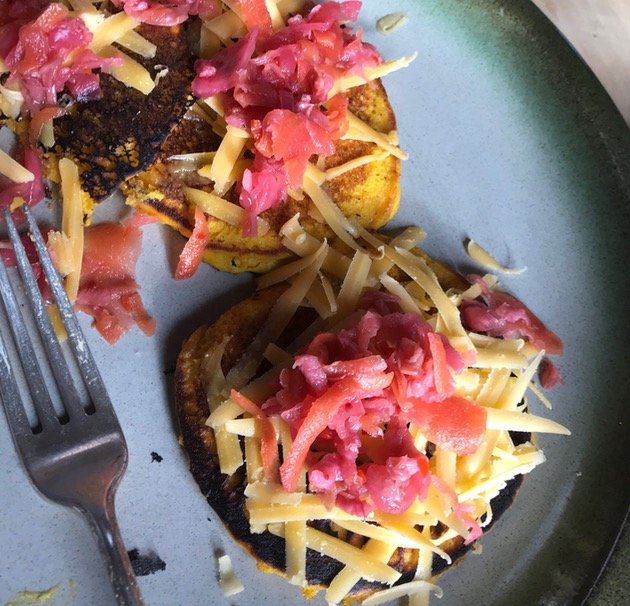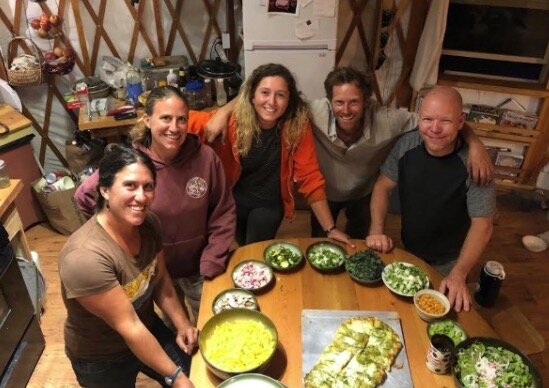Some context: for much of the winter, there is a seemingly bottomless bowl of leftover winter squash in our fridge, a result of our habit of baking as many as the oven can hold, anytime we bake, well, just about anything. Over the years we have made many unsuccessful attempts at squash fritters….mixing the squash puree with eggs, with various flours (being limited to gluten free options doesn’t help with binding things together).
But this week, we found success by simply blending the baked squash in about a 1:2 ratio into the regular pancake batter that works for us, and adding a little extra egg. You could almost certainly use this method for a sweet version, going all cinnamon and ginger, or pumpkin pie spices. But we happened to be inspired by some really good garlic, and our quart-jar of mixed Thai basil and Thai chili flakes. The result was a spicy, savory, squash pancake you could top with or wrap around just about anything….we went with cheese and kimchi. Maple syrup optional, but if you are a sweet + tangy + spicy fan, we recommend it.
How to do it:
Ingredients:
1 cup of a pancake mix that needs egg and oil added (or about 2 cups of your favorite pancake batter, however you make it)
1 cup of baked winter squash, any variety
2 eggs (or double the quantity called for in your mix or pancake recipe)
2 tablespoons toasted sesame oil (or you preferred cooking oil, but toasted sesame added some extra savory flavor to this combo)
1 huge or several small garlic cloves, finely minced
1-2 teaspoons of red chili flakes or chili-basil mix; (if you don’t have either of these, I would try 1/4 tsp of cayenne powder, and adjust based on taste. or have extra hot sauce on hand for topping).
2/3 cup of water (or roughly 2/3 - 3/4 of the liquid called for in your pancake recipe)
How to:
Combine all the ingredients in a large bowl, and mix til smooth with an immersion blender. Adjust liquid amount as needed to make a batter typical of your usual pancake batter. Pour onto a hot oiled griddle in 4-6” circles, and flip once, when bubbles have reached the center of each circle. Top with savory bits of your choice!




















